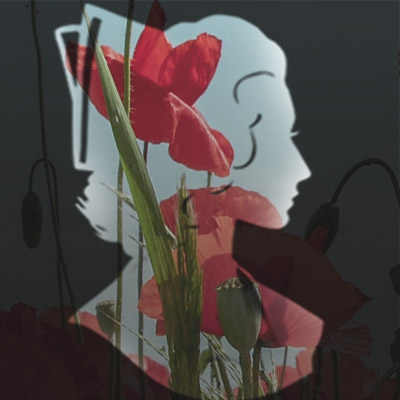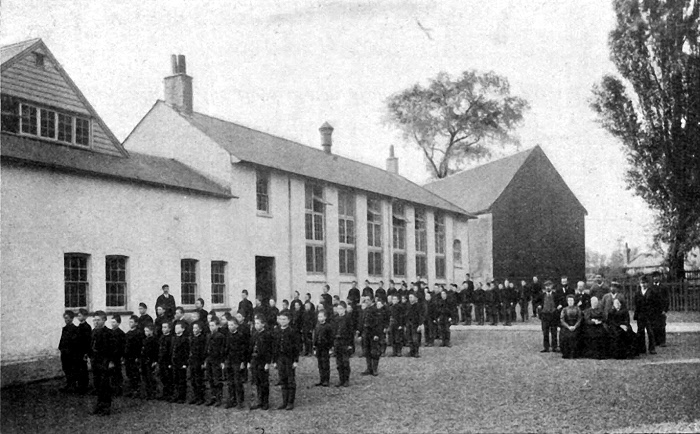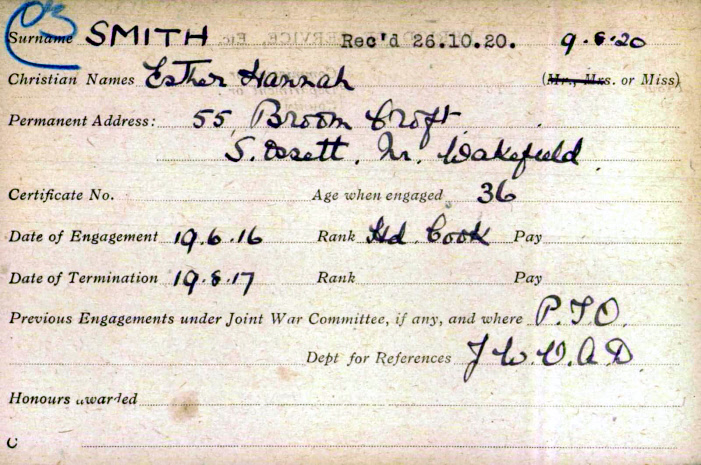
Esther Hannah Smith was born in Ossett in early 1873, the daughter of Derbyshire born George Smith and his wife Annie Maria (nee Slater) who had married in the Belper, Derbyshire area in 1866.
By 1881, Esther was living at Victoria Square, Ossett with her parents and four siblings: Jane Elizabeth (born 1868), Annie Mary (born 1870), George James (born 1872) and Agnes Edith (born 1875). Her father George was working as a butcher. All of the children were born in Ossett, suggesting that George and his wife were living in Ossett by 1868 shortly after their marriage in the summer of 1866. G. Smith (Pork Butcher) of Ossett is recorded, for the first time, in White’s Directory 1870 having not appeared in the 1866 edition.
By 1891, the Smith family had moved to live at 70, Thornes Lane, Wakefield. George, now a widower, continued his trade as a butcher assisted by his son, George James. The eldest daughter Annie M. was a dressmaker with Esther and Agnes completing the household.
In 1901 the family were still living at the same address where George and his son, George James continued their trade as butchers. Esther, now aged 28 years was working as a milliner as was her younger sister, Agnes Edith, aged 26 years.
Esther never married, but worked away from her home town of Ossett. Between 1929 and 1937 there is a record of Esther Hannah Smith living at Newton Avenue, Wakefield.
By 1911, Esther was working as a matron at Church Farm Home, Boys’ Industrial School at East Barnet in Hertfordshire. Always a little inventive with her actual age, Esther was listed as being 34 years of age in 1911.
The Boys’ Farm Home was established in 1860 as a branch home of the London Boys’ Home that was initially founded in 1858 in Euston Road, London. Both schools came under the 1857 Industrial Schools Act and were certified as industrial schools under that act. This allowed them to receive government funding. Boys could be admitted either as voluntary cases or through the courts. Voluntary cases were usually sponsored financially by an individual, cases that were sent through the courts were frequently sent their through the intervention of the London School Board. They were generally aged around 10 to 12 on admission but some younger and some older boys were admitted.

Above: Church Farm Industrial School for Boys (1860 – 1933).
At the age of fifteen they were found jobs by the managers and for two years the school kept in touch with their former boys and were paid a fee by the government to do this. Whilst at the school boys were kept extremely busy. They learnt trades, had basic education and were encouraged to take up sports. The swimming pool that is now used by local schools was originally built for the boys.
In June 1916, Esther Smith was employed by the VAD service as Head Cook at the South African Hospital in Richmond, London. She worked here for only one year until August 1917, and gave her age in 1916 as 36 years, when she was actually 43 years, and beyond the accepted age limits for VAD volunteers between 23 and 38 years old.

Above: Miss Esther Hannah Smith’s VAD record card.
After the South African army suffered devastating losses during the First World War, a dedicated military hospital was established in London to treat the wounded. The South African Military Hospital opened on the 28th June 1916 on a 12 acre site close to the Cambrian Gate in Richmond Park, London, provided by King George V. The hospital was opened after a prominent group of South Africans living in London formed a committee to raise funds for the establishment of a hospital, and for supplying general comforts to the soldiers. The whole of the building was built in a bungalow style. All of the corridors, wards and special departments were named after places in South Africa, to make those within feel more at home.
Although under the control of the War Office, the hospital managed to preserve its identity in that almost all of the staff came from South Africa. The medical staff consisted of 13 officers of the South African Medical Corps (SAMC) and 11 civilian practitioners who, for various reasons, were not eligible for commissions in the SAMC. The nursing staff belonged mostly to the QIAMNS Reserve or to the South African Military Nursing Service, and consisted of a Matron, two Assistant Matrons, 23 Sisters, 55 Staff Nurses and 88 probationers (most of whom were South African).

By the end of October 1918, a total of 274 officers and 9,142 men of other ranks had been admitted to the hospital. The hospital closed in 1921. Nothing really remains of it today.
Miss Esther Hannah Smith died in the Wakefield area aged 65 years in late 1938.
References